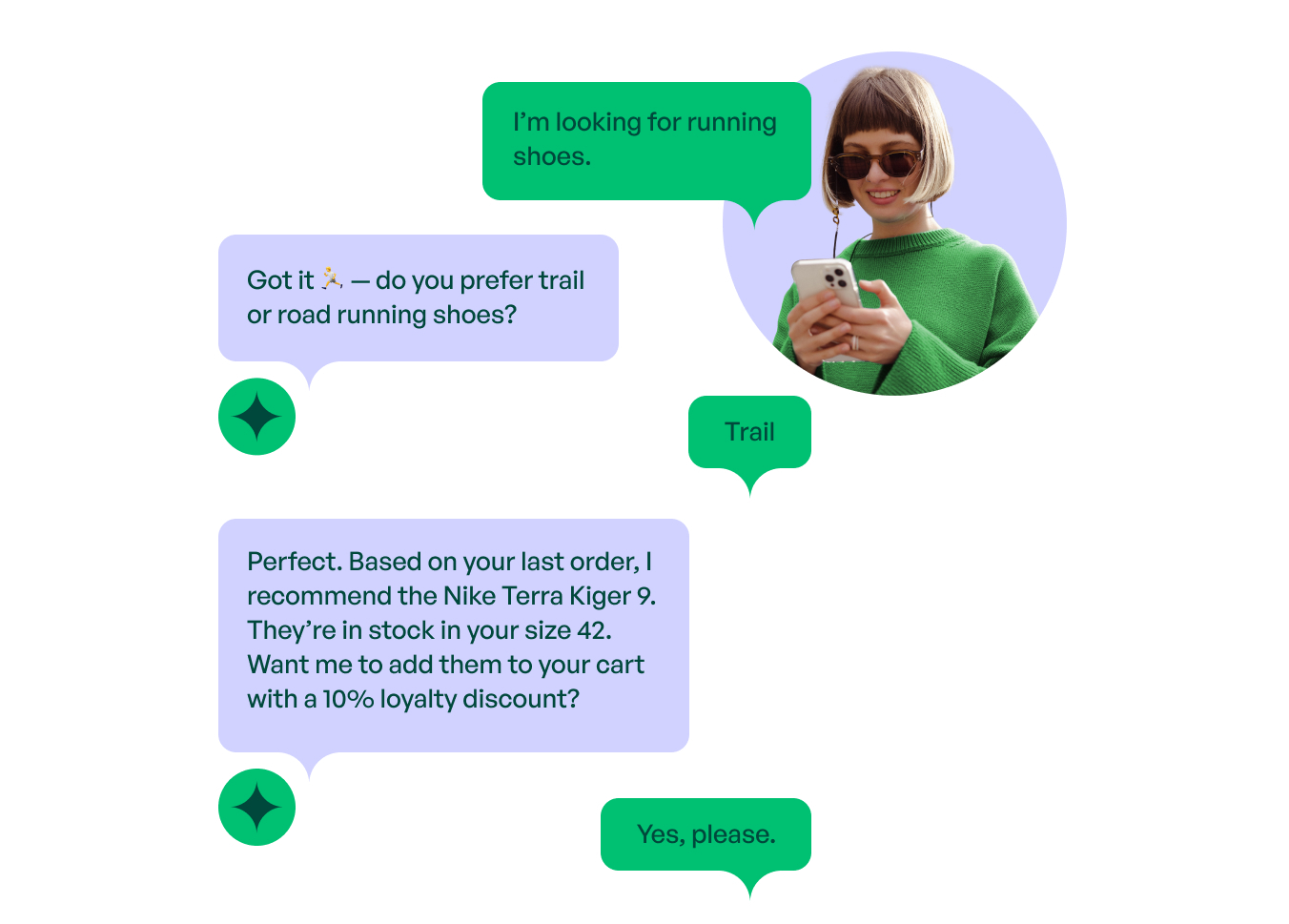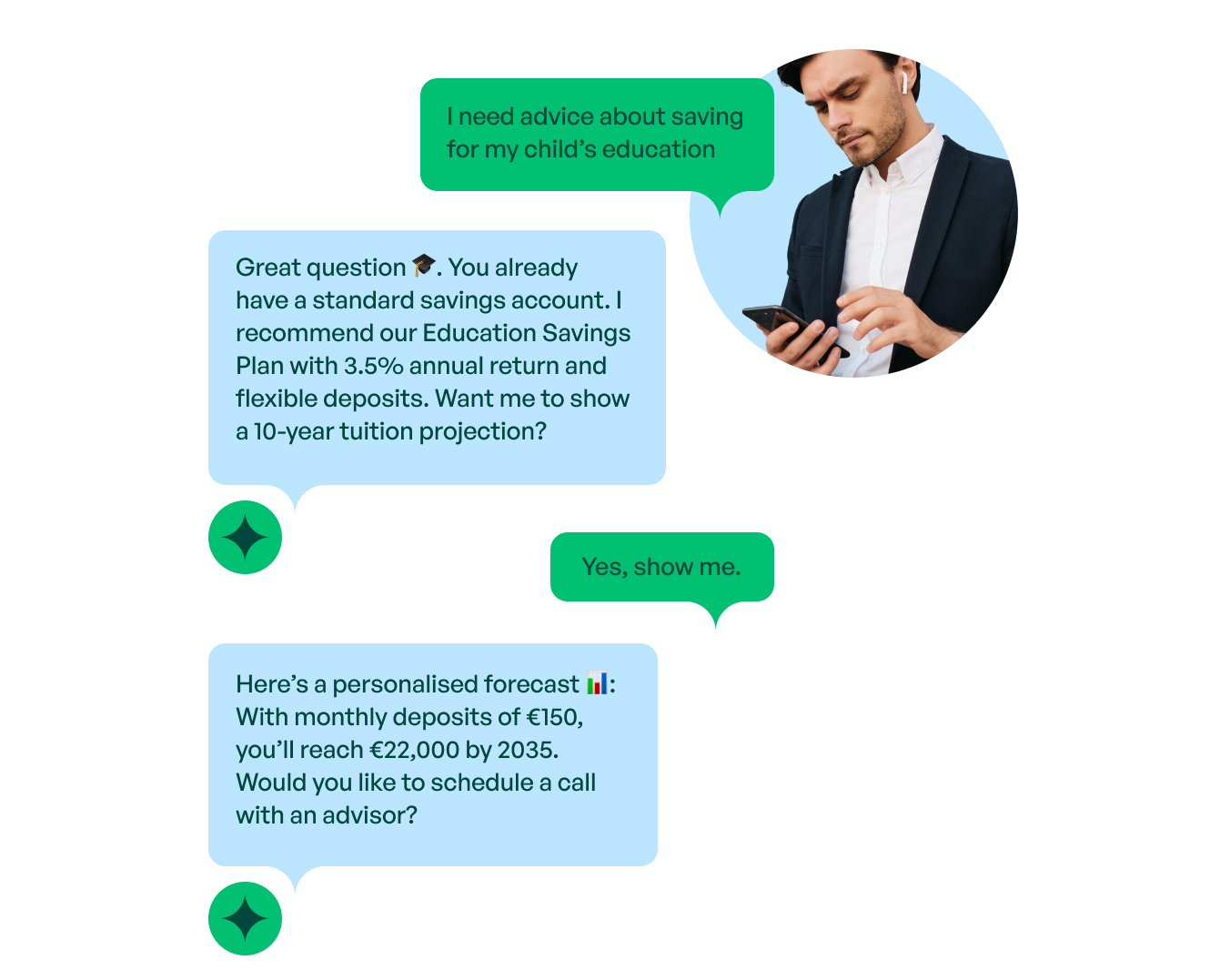Why Brands Are Moving from Regular Chatbots to AI Assistants
 by
by
GMS Team
Once considered cutting-edge, simple, rule-based chatbots are increasingly unable to meet modern consumers' demands. These traditional bots follow rigid conversation paths, lack flexibility, and frequently misunderstand customer intent, leading users into repetitive loops that create frustration rather than resolution.
Customer experience studies consistently highlight that immediate responses are no longer sufficient if those responses do not effectively address customer queries. Basic chatbots are often limited in their capability to resolve complex or nuanced issues, significantly impacting customer satisfaction. Moreover, consumers today demand personalised and contextually relevant interactions, something basic bots inherently lack. Customers who perceive bots as mere gatekeepers tend to avoid interaction altogether, weakening their effectiveness.
How AI Assistants Improve Engagement
AI assistants have dramatically transformed customer engagement, providing the advanced capabilities that modern consumers demand. They leverage natural language processing (NLP) and machine learning (ML) technologies to deliver more personalised, contextually relevant, and fully automated experiences.
Personalisation has become a cornerstone of effective customer interaction. AI assistants excel at analysing vast amounts of customer data, enabling them to provide tailored recommendations and responses.
In retail, AI can dynamically recommend products based on past purchases, browsing behaviour, and real-time actions, significantly enhancing customer satisfaction and increasing sales conversions. Banks leverage AI assistants to offer customised financial advice and proactive support based on individual user profiles and transaction histories.
Contextual awareness further enhances engagement by allowing AI assistants to recognise and adapt to the nuances of customer interactions. Unlike basic chatbots, AI assistants remember conversation histories, detect user sentiment, and identify underlying intent, enabling seamless transitions between tasks or hand-offs to human agents. This adaptability ensures smooth and efficient customer journeys, whether in troubleshooting, sales, or complex issue resolution.
AI-powered automation goes beyond simple interactions. These assistants streamline entire business processes, from order tracking and account management in telecommunications to complex administrative tasks in healthcare. By automating processes such as booking appointments, verifying insurance, and handling fraud detection, organisations significantly reduce operational costs and enhance service efficiency, allowing human employees to focus on high-value tasks.

Industries Leading the Shift
Several industries stand out as pioneers in transitioning from traditional chatbots to sophisticated AI assistants, recognising substantial improvements in customer experience and operational efficiencies.
In retail, AI is transforming how consumers interact with brands both online and in physical stores. AI-driven assistants support personalised shopping experiences, offer real-time inventory checks, and even suggest complementary items, drastically improving customer satisfaction and sales performance. For instance, providers like GMS supply retailers with seamless integration of conversational AI into customer communication channels, enhancing the overall retail experience.
Leading banks and financial services embrace AI-powered assistants to improve client interactions, fraud detection, and personalised advisory services. Major banks deploy AI to enhance customer engagement through intelligent virtual assistants capable of sophisticated financial advice, transaction verification, and real-time customer support. These solutions significantly reduce operational overhead while simultaneously elevating customer trust and satisfaction through proactive and intelligent service.
In healthcare, AI assistants help automate tedious administrative tasks, facilitate patient engagement, and ensure more accurate and timely responses to patient queries. Healthcare providers use AI to monitor patient conditions remotely, anticipate patient needs, and swiftly manage patient interactions. Hospitals adopting AI assistants have reported up to 45% increase in administrative efficiency and patient satisfaction, primarily due to more responsive and empathetic interactions.
Telecommunications companies leverage AI to provide continuous, real-time customer support, automate network troubleshooting, and ensure seamless user experiences. AI-powered virtual assistants handle network inquiries, billing issues, and service requests, substantially reducing response times and improving customer retention.

Transitioning from Rule-Based to AI-driven assistants Effectively
Organisations looking to transition from traditional chatbots to AI-driven assistants must approach this shift strategically. This transformation requires more than mere technology adoption; it necessitates comprehensively rethinking customer interactions and internal processes.
Defining clear, targeted use cases is critical. Organisations must first identify the most impactful areas, typically repetitive and high-volume interactions, to demonstrate immediate value and ease the transition. Early successes build organisational confidence and momentum for broader implementation.
A successful shift calls for deep integration of AI tools with existing data sources and internal systems. Effective AI assistants rely on comprehensive data access — customer profiles, transaction histories, and real-time system data — to deliver genuinely personalised and contextually aware interactions.
Human oversight also remains essential. Even advanced AI requires clearly defined escalation paths to human agents for sensitive or complex inquiries. Ensuring transparency around AI capabilities, including clear indicators of when a user interacts with an AI versus a human, can significantly enhance customer trust and engagement.
Training both employees and customers is equally crucial. Employees should understand how to utilise AI assistants effectively, ensuring they can support customer interactions efficiently. Customer education ensures smooth adoption and builds confidence in interacting with AI.
Continuous monitoring, evaluation, and iterative improvement are essential to ensure AI assistants meet evolving customer expectations and organisational goals. Companies must regularly analyse engagement metrics, user feedback, and resolution effectiveness, continually refining AI models to enhance performance and customer satisfaction, and choosing suitable technology partners significantly simplifies the transition.
Looking Forward: AI and the Future of CX
As we move further into 2025 and beyond, AI-driven customer experiences will become standard practice. Brands embracing sophisticated AI assistants early are positioned not only to meet current consumer expectations but also to shape them. The shift from rule-based chatbots to AI assistants represents more than a technological upgrade — it is a strategic imperative defining future success in customer engagement.
Seamlessly integrating GMS’s AI-Driven solutions into your company opens doors to a new era of efficiency and insights. Contact us to explore tailored solutions and embark on a transformative journey.

GMS Team
Stay ahead of industry news
Join our newsletter community to receive the latest updates on industry trends, upcoming events and webinars, and the latest GMS product updates.
More from GMS
Keep up with industry trends and technology advancements.